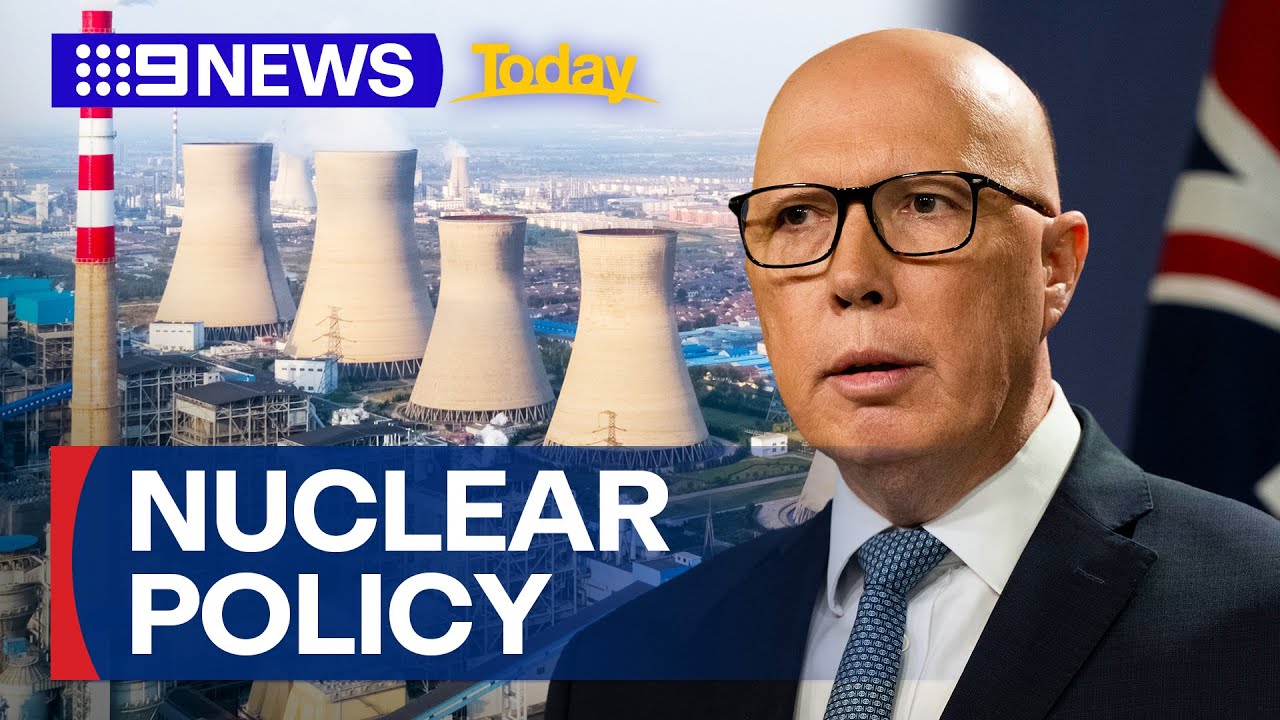The press conference is currently still live so this was the best short video I could find on the topic.
To begin, I’m absolutely against this proposal, but I want to see a discussion - hopefully a constructive one - between Aussies (comments are always turned off for Australian news on YT) to gauge some idea of how people generally feel about the idea.
Fire off.



The problem of nuclear waste isn’t actually a problem, and the 1000 year thing is a bit of an outdated myth. I wrote more about it here: https://aussie.zone/post/10867702/9731416
Energy storage is actually the biggest problem in energy right now (save for a crazy discovery like perpetual energy, or cheap mass produced super conductors that could optimize the absolute shit out of our energy transmission infrastructure and reduce the amount of energy that we need to produce in the first place).
The energy storage problem is actually the biggest reason why we need nuclear with our renewables.
Nuclear can run our baseloads, renewables plus storage can run our peakloads.
It’s renewables AND nuclear, not renewables vs nuclear.
Happy cake day!
The thing about nuclear is that it just is too expensive, and it’s never going to be ready in time. We need to be getting off of greenhouse emitting energy sources a decade ago. Renewables can get us there so much faster than nuclear can, because it’ll be over a decade before we get a single plant operating even if we ignore all the political difficulties in getting started. With the political issues, it’ll easily be 2040 before anything is online. That’s just not soon enough.
As for cost, nuclear doesn’t compare. It’s much more expensive upfront than renewables, and it’s still multiple times more expensive over its lifetime. There’s no way of looking at it that sees nuclear as a more affordable option than renewables.
Also, baseload power is a myth.
The overall expense of this endevour seems to be the biggest factor against nuclear, especially for a relatively small population separated across a vast landmass.
Recycling is incredibly expensive as well, and still requires extensive storage pools for the waste to cool for several years before it can be recycled - granted not for thousands of years, but a lot of short-term storage space would still be required.
Not all the used fuel is suitable for recycling either. And I’m of the understanding that thus far, only about 30% of spent nuclear fuel has been recycled in countries that do it (though I believe this is a capacity issue, not a suitability of waste fuel issue).
I’m not yet convinced on the safety of modern nuclear plants in natural disaster/apocalyptic scenarios, but I agree that an Australia of the future could benefit from being OP.
The cost of nuclear is only at the commissioning and decommissioning of the plant. But during the runtime of the plant is remarkably cheap. People just balk at the initial price because so much of the cost is up front.
Another thing to remember about recycling is that we as a species were producing nuclear waste before we had reactors that could use recycled waste so globally speaking we currently have a surplus of waste. Recently the US had to restart a reactor because they didn’t have enough materials to use for powering deep space probes. It’s not implausible that we could run out of waste to use and have to produce more fresh fuel.
On the topic of safety though, modern reactor designs require power coming in to keep the fissile material frozen to continue the reaction.
As soon as the power is cut, the coolant is cut, part of the plant is destroyed, or something else goes wrong, the plant stops working. If the plant stops working, there’s nothing to cool down the fissile material.
The fissile material’s own radioactivity heats it up to the point that it melts and pours away over what’s essentially a pyramid plinko drain splitting up the liquid into many separate pools. (If it helps, think of your bath’s drain if the pipe splits into two, which split into four, which split into eight, and on and on until a bath tub’s water has been separated into an ice cube tray the size of a tennis court.)
Fissile material only reacts when it’s next to enough fissile material.
And since it’s separated and spread out, there’s more reaction.
If you cut the power for the coolant pumps, the fuel melts, separates (by the power of gravity) and the reaction stops.
If the coolant leaks, the fuel melts, separates and stops reacting.
If you crash a plane into the reactor itself, the cooling mechanisms don’t exist anymore and the fuel melts and pours out the nearest holes (either the drain or spilling outside the reactor into the containment structure, or even outside if need be), spreading out, separating, and reacting no more.
Modern reactors have more in common with an ice-cube hoisted above the great pyramid of giza than they do the fukushima or chernobyl plants. Both of those were designed to require power to prevent a dangerous meltdown which turn into a runaway reactions, whereas modern reactors make it so a meltdown prevents reactions.